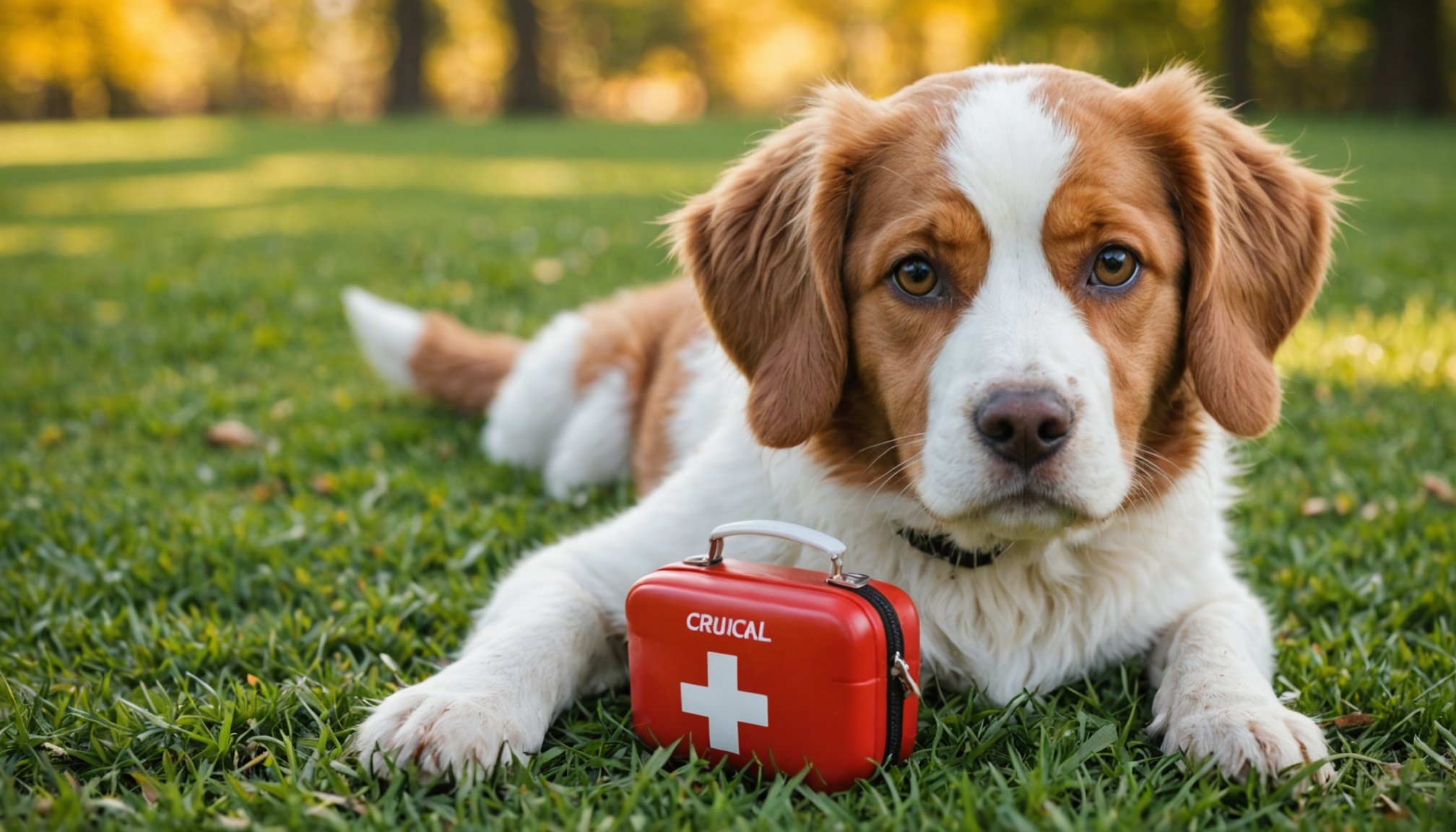Essential First Aid Techniques for Pets
In a pet emergency, staying calm is crucial. The first response can affect the outcome significantly. Begin by familiarising yourself with basic first aid techniques. These techniques often mirror human first aid but are adapted for pet health care.
CPR for pets is a critical skill to learn. Begin by checking for breaths and a heartbeat. If absent, place the pet on its right side and begin compressions on the widest part of the chest. For small animals, use a single hand. For larger pets, use both hands. After 30 compressions, administer two mouth-to-snout breaths. Continue until help arrives or the pet resumes breathing.
Have you seen this : Definitive Handbook: Expert Tips for Winter-Proofing Your Dog House Against Extreme Cold
Another key aspect is understanding when to apply these emergency protocols. Not every situation requires immediate intervention; however, knowing the signs of distress, such as unresponsiveness or labored breathing, can help differentiate between immediate emergencies and less severe conditions. Always have a pet first aid guide, which lists symptoms and actions to take, like administering CPR or treating wounds. Regular practice of these techniques can boost confidence and preparedness. Equip yourself with this knowledge to make informed and potentially life-saving decisions for your furry companions.
Common Pet Injuries and Ailments
Understanding pet injuries and ailments is crucial for prompt response. Identifying symptoms in pets can be challenging, yet recognising key signs is essential.
Also read : Essential guide to crafting allergy-safe homemade dog food for loving pet owners
Cuts and Wounds
Assess any cuts and wounds carefully. Determine the depth and location of the injury. Clean the wound with a mild antiseptic, and dress it using sterile gauze. When should you see a vet? If bleeding persists or the wound is deep, seek professional help immediately. Timely intervention is critical to prevent infection.
Poisoning
Recognising poisoning signs in pets is vital. Look for symptoms like vomiting, drooling, or unsteady movement. Immediate action involves contacting a vet and removing any suspected toxin if possible. Be aware of common household items hazardous to pets, such as chocolate or cleaning agents.
Heatstroke
Heatstroke symptoms in pets include excessive panting, drooling, or lethargy. Immediate care involves moving the pet to a cool area and applying damp cloths to the body. Encourage them to drink small amounts of water. Prevention is key: never leave them in hot cars and ensure access to shade and water during warm months.
Being prepared and observant can prevent minor injuries from escalating, ensuring the well-being of your beloved pets.
Step-by-Step First Aid Guides
In the realm of pet rescue and emergency response, having a structured approach is essential. First, create a comprehensive first aid guide tailored for your pet’s needs. It’s crucial to have a checklist of supplies every pet owner should maintain, including gauze, antiseptic, scissors, and a muzzle.
Administering First Aid
When an injury occurs, being prepared is paramount. Practice common injury procedures regularly to build confidence and competence. For example, when attending to a cut, examine the severity and location. Clean gently using antiseptic and properly dress the wound with sterile materials. Regular practice ensures you respond swiftly and effectively during emergencies.
Handling Emergencies
Crafting a pet first aid kit is an indispensable step. Equip it with essential items such as tweezers, bandages, and adhesive tape. Moreover, list down emergency contacts, including your vet and 24/7 animal hospitals, ensuring immediate access during a crisis. Preparation extends further while travelling; keep an adaptable travel kit and familiarize yourself with local veterinary services in advance. By doing so, ensure both safety and peace of mind for your furry companions on all journeys.
Veterinary Contacts and Emergency Resources
In urgent situations, having immediate access to emergency veterinary contacts is vital. Compile a list of local veterinarians, 24/7 clinics, and animal hospitals. This ensures that you are prepared to act promptly when your pet needs urgent care.
To find reliable local veterinary services, research in advance, focusing on those with emergency capabilities. Visiting clinics or calling them to understand their emergency protocols can be beneficial. It’s critical to have these contacts not just at home but also when travelling with your pet. Include this information in your mobile phone and physical emergency response cards placed in a prominent location at home.
When seeking pet health resources online, reliability is key. Look for government or educational institution publications, or reputable pet care organisations. These resources can offer advice on first aid techniques and general pet care practices. However, never substitute online information for professional veterinary advice during emergencies.
Emergency veterinary contacts, equipped with your knowledge of emergency protocols, create an effective preparedness strategy. This combination supports your proactive approach to your pet’s health and safety, ensuring rapid response and health care access when needed.
Preventive Measures and Best Practices
Ensuring your pet’s health and emergency preparedness requires regular check-ups and adopting specific best practices. Routine health maintenance, including vaccinations, is vital in preventing diseases. Regular vet visits help track any potential health issues early, safeguarding your pet’s well-being.
Pet identification plays a significant role in emergency situations. Microchipping or using ID tags aids in quick reunification if your pet gets lost. This simple step can make a significant difference, providing peace of mind.
Training your pet to respond to basic commands is equally crucial. In emergencies, a well-trained pet might follow safety instructions, reducing panic. Commands like “sit,” “stay,” or “come” can be life-saving, especially in chaotic situations.
Additionally, maintain a written plan detailing emergency preparedness steps. Ensure everyone in your household is familiar with these plans, including evacuation routes and nearest shelters for you and your pet.
By establishing these preventive measures, you create a safer environment and contribute significantly to your pet’s overall health. Regular checks, proper identification, and obedience training are the cornerstones of ensuring your pet is primed for any unexpected event, enhancing both safety and security.

